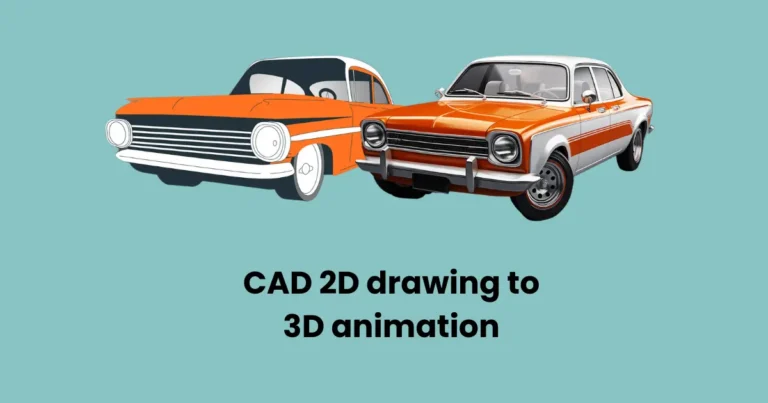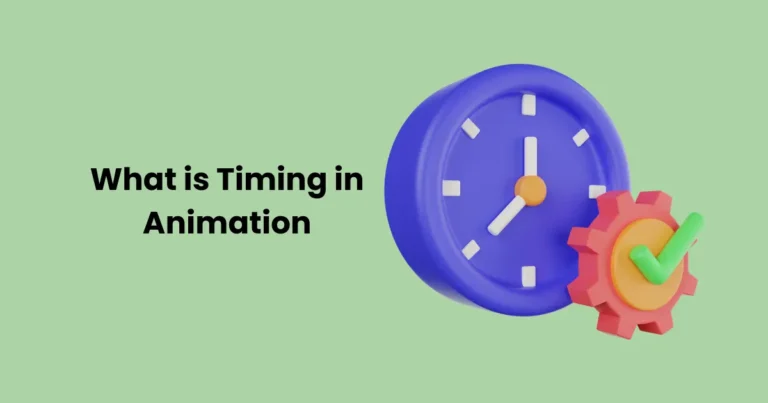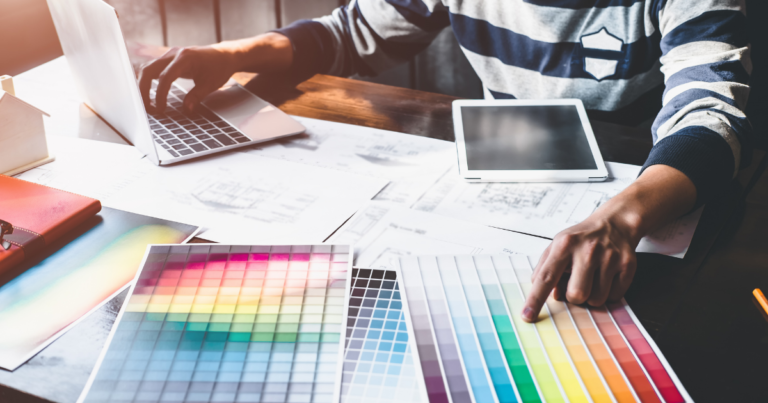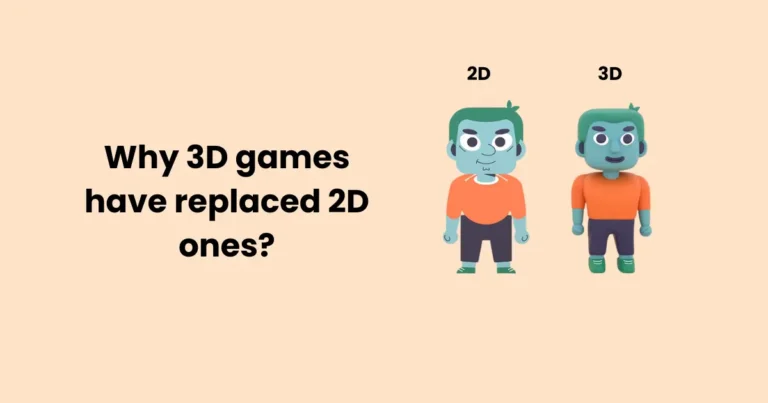2D Animation Pipeline: Amazing Tips and tricks
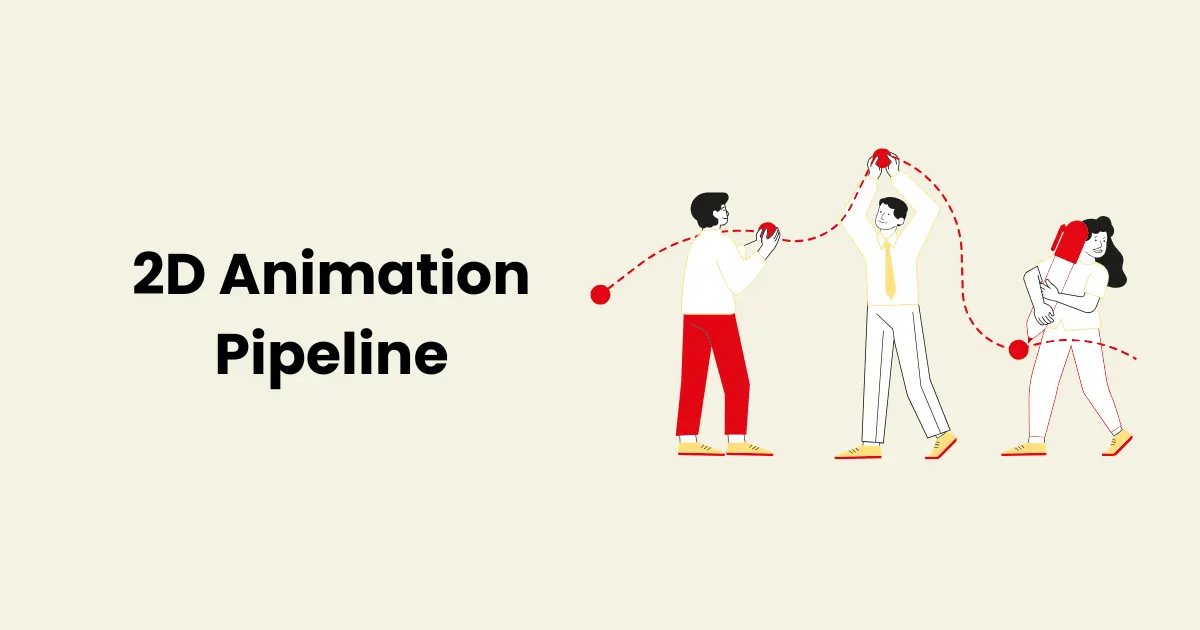
Contents
- 1 What is a 2D Animation Pipeline?
- 2 Key Stages of the 2D Animation Pipeline
- 2.0.1 1. Concept Development and Storyboarding
- 2.0.2 2. Character Design and Pre-Visualization
- 2.0.3 3. Layout Creation
- 2.0.4 4. Animation Process
- 2.0.5 5. Clean-Up and Line Art
- 2.0.6 6. Coloring and Shading
- 2.0.7 7. Compositing and Visual Effects
- 2.0.8 8. Sound Design and Syncing
- 2.0.9 9. Final Render and Delivery
- 3 Software Tools in the 2D Animation Pipeline
- 3.0.1 1. Concept Development and Storyboarding Tools
- 3.0.2 2. Character Design and Pre-Visualization Tools
- 3.0.3 3. Layout and Background Design Tools
- 3.0.4 4. Animation Tools
- 3.0.5 5. Clean-Up and Line Art Tools
- 3.0.6 6. Coloring and Shading Tools
- 3.0.7 7. Compositing and Visual Effects Tools
- 3.0.8 8. Sound Design and Syncing Tools
- 3.0.9 9. Final Render and Delivery Tools
- 4 Best Practices for an Efficient 2D Animation Pipeline
- 4.0.1 1. Plan and Organize Thoroughly
- 4.0.2 2. Invest in Pre-Production
- 4.0.3 3. Standardize Workflows
- 4.0.4 4. Encourage Team Collaboration
- 4.0.5 5. Focus on Quality Assurance
- 4.0.6 6. Optimize Hardware and Software
- 4.0.7 7. Manage Resources Wisely
- 4.0.8 8. Streamline Rendering and Delivery
- 4.0.9 9. Stay Updated on Trends and Techniques
- 4.0.10 10. Evaluate and Improve Post-Production
- 5 Challenges in the 2D Animation Pipeline and How to Overcome Them
- 5.0.1 1. Inconsistent Communication
- 5.0.2 2. Scope Creep
- 5.0.3 3. Budget Constraints
- 5.0.4 4. Technical Bottlenecks
- 5.0.5 5. Difficulty in Maintaining Quality
- 5.0.6 6. Time Management Issues
- 5.0.7 7. Creative Burnout
- 5.0.8 8. Client Revisions and Feedback Loops
- 5.0.9 9. Sound and Animation Sync Issues
- 5.0.10 10. Rendering Delays
- 5.1 Conclusion
The 2D animation pipeline is the structured sequence of steps that bring a creative idea to life as a fully animated project. From initial concept sketches to the final polished animation, this pipeline ensures every stage of production is organized and efficient. Whether creating a short cartoon, an educational video, or a full-length animated film, following a well-defined pipeline is crucial to achieving high-quality results.
The pipeline serves as a roadmap for animators, artists, and production teams, breaking down the complex animation process into manageable phases. Each step is interconnected, ensuring that creative visions are translated into dynamic, engaging animations. A strong understanding of the 2D animation pipeline allows teams to streamline workflows, meet deadlines, and maintain consistency in their projects.
By exploring the stages of this pipeline, you’ll gain insight into how an idea evolves into a visual masterpiece. This journey showcases the combination of creativity and technical precision required in the world of 2D animation.
What is a 2D Animation Pipeline?
The 2D animation pipeline is a systematic framework of processes used to create 2D animated content. It encompasses a series of interconnected stages that take an idea from concept to completion, ensuring a smooth and efficient workflow. By dividing the animation process into manageable steps, the pipeline helps teams maintain clarity, productivity, and high-quality output throughout the production cycle.

At its core, the 2D animation pipeline combines creativity and technical expertise. Each stage—from brainstorming ideas to delivering the final animation—plays a vital role in ensuring the seamless integration of storytelling, design, and motion. This structured approach is crucial for teams working on projects of varying sizes, whether it’s a short animated clip or a feature-length film.
By utilizing a defined pipeline, animators can:
- Maintain consistency in their style and storytelling.
- Avoid miscommunication among team members.
- Identify and address production challenges early.
The 2D animation pipeline acts as a blueprint that transforms imagination into visually compelling animations, making it a cornerstone of the animation industry.
Key Stages of the 2D Animation Pipeline
The 2D animation pipeline consists of several distinct stages, each contributing to the creation of polished and captivating animations. Let’s break down the key stages involved:

1. Concept Development and Storyboarding
- Concept Development: This is where ideas are brainstormed, narratives are outlined, and the story takes shape. A clear concept sets the foundation for the entire animation.
- Storyboarding: Storyboards are visual blueprints, presenting the sequence of events, camera angles, and character actions. They act as a guide for the animation team.
2. Character Design and Pre-Visualization
- Character Design: Designers create detailed sketches and turnarounds of characters to define their appearance, emotions, and movements.
- Pre-Visualization: Early mockups or animatics are created to test timing, transitions, and overall flow before committing to full production.
3. Layout Creation
- Backgrounds, environments, and scenes are designed, establishing the visual context for the animation.
- Composition, framing, and camera angles are finalized to align with the storyboard.
4. Animation Process
- Rough Animation: Animators produce rough sketches of keyframes to define the movement and pacing of characters and objects.
- In-betweening: Additional frames are added to smooth out the motion between keyframes.
- Final Animation: Cleaned-up and polished frames are prepared for the final sequence.
5. Clean-Up and Line Art
- Animators refine rough sketches by tracing them with smooth and clean lines. This stage ensures a polished and professional look.
- Line art consistency is crucial to maintaining quality across all frames.
6. Coloring and Shading
- Colors are added to characters and backgrounds based on the pre-determined color palette.
- Shading, highlights, and effects are applied to add depth and realism to the scenes.
7. Compositing and Visual Effects
- Animated elements, backgrounds, and special effects are layered together to create the final visual.
- Lighting and additional effects, such as motion blur or particle effects, are incorporated to enhance the animation.
8. Sound Design and Syncing
- Dialogue, sound effects, and background music are recorded and synced to the animation.
- Sound enhances the emotional impact and immersion of the animation.
9. Final Render and Delivery
- The completed animation is rendered in its final format, ensuring all elements are seamlessly integrated.
- The project is reviewed for quality assurance before being delivered to the client or audience.
Each of these stages is vital for creating a seamless and engaging 2D animation pipeline. By following these steps, animators can transform creative ideas into visually compelling stories that captivate audiences.
Software Tools in the 2D Animation Pipeline
The 2D animation pipeline relies on a variety of software tools to streamline production, enhance creativity, and ensure high-quality output. Each stage of the pipeline benefits from specialized software tailored to specific tasks. Here’s an overview of the tools commonly used in the process:

1. Concept Development and Storyboarding Tools
- Storyboard Pro: Industry-standard for creating storyboards with tools for animatics and camera movements.
- Adobe Photoshop: Widely used for initial sketches, concept art, and storyboards.
- Krita: A free and open-source tool ideal for creating storyboards and concept art.
2. Character Design and Pre-Visualization Tools
- Adobe Illustrator: Great for designing detailed characters with vector graphics.
- Clip Studio Paint: Popular for its powerful drawing tools and character design capabilities.
- Procreate: A versatile app for sketching and designing characters, especially on iPads.
3. Layout and Background Design Tools
- Toon Boom Harmony: Used for designing layouts and integrating them with animated elements.
- Corel Painter: Excellent for creating hand-painted, realistic backgrounds.
- Blender (2D Mode): Offers tools for creating layouts with depth and perspective.
4. Animation Tools
- Toon Boom Harmony: A leading tool for 2D animation, offering features for both frame-by-frame and rigged animation.
- Adobe Animate: Ideal for creating animations for web, TV, and games.
- OpenToonz: A free and open-source animation tool used by professionals and hobbyists alike.
- Synfig Studio: Open-source software for advanced 2D animations with a focus on vector-based work.
5. Clean-Up and Line Art Tools
- Toon Boom Harmony: Its clean-up tools ensure smooth and consistent line art.
- Adobe Fresco: Ideal for refining line work with natural drawing and inking tools.
6. Coloring and Shading Tools
- Toon Boom Harmony: Integrated coloring tools that streamline the process.
- Clip Studio Paint: Known for its efficient coloring workflow and shading tools.
- PaintTool SAI: Lightweight software for precise coloring and shading.
7. Compositing and Visual Effects Tools
- After Effects: Industry-standard for compositing and adding special effects.
- Toon Boom Harmony: Offers built-in compositing features for integrating layers and effects.
- Nuke: Advanced software for complex compositing tasks.
8. Sound Design and Syncing Tools
- Audacity: A free, user-friendly tool for recording and editing sound.
- Adobe Audition: Professional software for advanced sound editing and mixing.
- Reaper: A versatile digital audio workstation for sound syncing and editing.
9. Final Render and Delivery Tools
- Adobe Media Encoder: Used for rendering animations into various formats and resolutions.
- HandBrake: Free software for compressing and optimizing final videos.
- FFmpeg: Open-source tool for rendering and video processing.
Using the right software tools at each stage of the 2D animation pipeline is essential for achieving smooth workflows and high-quality animations. Many of these tools are compatible with each other, allowing seamless integration across different stages of production.
Best Practices for an Efficient 2D Animation Pipeline
A well-organized 2D animation pipeline is essential for creating high-quality animations while minimizing delays and inefficiencies. Following best practices ensures smoother workflows, better collaboration, and outstanding results. Here are some tips to optimize your pipeline:

1. Plan and Organize Thoroughly
- Define Goals and Timelines: Set clear project objectives and realistic deadlines for each stage of the pipeline.
- Use a Project Management Tool: Tools like Trello, Asana, or Monday.com can help track tasks, milestones, and progress.
- Create a Detailed Storyboard: A comprehensive storyboard minimizes confusion and sets a clear visual direction.
2. Invest in Pre-Production
- Spend adequate time on concept development, character design, and storyboarding.
- Resolve creative and technical issues during pre-production to avoid costly revisions later.
3. Standardize Workflows
- Establish Naming Conventions: Use consistent naming schemes for files and assets to avoid confusion.
- Develop a Style Guide: Ensure uniformity in animation style, character design, and color palettes across the team.
- Automate Repetitive Tasks: Use scripts or plugins to streamline repetitive processes, such as color fills or line clean-ups.
4. Encourage Team Collaboration
- Foster open communication among animators, designers, and sound engineers.
- Use collaborative tools like Google Drive, Dropbox, or Frame.io for sharing and reviewing assets.
- Hold regular team meetings to address challenges and keep everyone aligned with project goals.
5. Focus on Quality Assurance
- Review Each Stage: Conduct thorough checks at every stage to catch errors early.
- Test Animatics: Review pre-visualizations for timing and flow before proceeding to full animation.
- Seek Feedback: Regularly consult stakeholders or clients to ensure the project aligns with their vision.
6. Optimize Hardware and Software
- Use industry-standard software tools that suit your team’s workflow and project needs.
- Upgrade hardware to handle intensive tasks like rendering and compositing efficiently.
- Ensure software compatibility to avoid technical issues during production.
7. Manage Resources Wisely
- Budget Effectively: Allocate resources for each stage of the pipeline, including time, tools, and personnel.
- Reuse Assets: Repurpose background elements, props, or character designs when applicable to save time.
8. Streamline Rendering and Delivery
- Optimize files and assets for faster rendering times.
- Perform a final quality check on the rendered animation to ensure it meets the desired standards.
- Deliver files in multiple formats to cater to different platforms or client requirements.
9. Stay Updated on Trends and Techniques
- Keep up with advancements in animation tools and techniques to improve efficiency.
- Attend workshops, webinars, or courses to refine your skills and adopt new practices.
10. Evaluate and Improve Post-Production
- After completing the project, assess what worked well and identify areas for improvement.
- Document lessons learned to enhance future projects.
By implementing these best practices, animation teams can maintain an efficient 2D animation pipeline, reduce bottlenecks, and consistently produce engaging animations that captivate their audiences.
Challenges in the 2D Animation Pipeline and How to Overcome Them
Creating a high-quality animation through the 2D animation pipeline is a rewarding process, but it also comes with challenges that can impact timelines, budgets, and overall quality. Recognizing these challenges and addressing them proactively is key to successful production. Below are some common challenges and strategies to overcome them:

1. Inconsistent Communication
- Challenge: Miscommunication among team members can lead to misunderstandings, delays, and errors in the animation process.
- Solution:
- Use collaboration tools like Slack, Microsoft Teams, or Zoom to maintain clear and consistent communication.
- Share regular progress updates and ensure that everyone understands the project goals and requirements.
- Foster a culture of open communication to address issues promptly.
2. Scope Creep
- Challenge: Unplanned changes or additions to the project scope can strain resources and delay production.
- Solution:
- Clearly define the project scope and requirements during the pre-production phase.
- Use contracts and agreements to set expectations with clients or stakeholders.
- Implement a change management process to evaluate and approve changes.
3. Budget Constraints
- Challenge: Limited budgets can restrict access to tools, talent, or time, impacting the quality of the final animation.
- Solution:
- Allocate resources efficiently and focus on priorities.
- Use free or open-source animation tools like OpenToonz or Krita when necessary.
- Plan for potential financial contingencies during the budgeting phase.
4. Technical Bottlenecks
- Challenge: Outdated hardware, software crashes, or incompatible tools can slow down production.
- Solution:
- Ensure team members have access to updated hardware and software.
- Conduct regular technical training to improve proficiency in animation tools.
- Use cloud-based storage and collaboration platforms to prevent data loss and facilitate access.
5. Difficulty in Maintaining Quality
- Challenge: Consistency in animation quality can be hard to maintain, especially in large projects with multiple team members.
- Solution:
- Develop and distribute a style guide that includes details on character design, animation style, and color schemes.
- Use a clean-up phase to refine rough animations and ensure quality consistency.
- Assign a quality assurance lead to oversee and review each stage of the pipeline.
6. Time Management Issues
- Challenge: Poor scheduling can lead to missed deadlines and rushed production stages.
- Solution:
- Create a detailed production timeline with realistic deadlines for each stage.
- Use project management tools like Trello, Asana, or Monday.com to track progress.
- Break down complex tasks into smaller, manageable milestones.
7. Creative Burnout
- Challenge: Long hours and tight deadlines can lead to burnout among animators and team members.
- Solution:
- Allow for sufficient breaks and downtime in the production schedule.
- Rotate responsibilities among team members to avoid monotony.
- Encourage open discussions about workloads and well-being.
8. Client Revisions and Feedback Loops
- Challenge: Excessive revisions can derail production schedules and increase costs.
- Solution:
- Set limits on the number of revisions in the contract.
- Use animatics and pre-visualizations to ensure alignment early in the process.
- Communicate frequently with clients to manage expectations.
9. Sound and Animation Sync Issues
- Challenge: Poor synchronization between sound effects, dialogue, and animation can disrupt immersion.
- Solution:
- Use specialized software like Adobe Audition or Reaper to sync sound accurately.
- Test the synchronization during the animatics phase.
- Review the final animation for any mismatches before rendering.
10. Rendering Delays
- Challenge: Rendering can be time-consuming, especially for high-resolution animations.
- Solution:
- Optimize animation files by reducing unnecessary details or layers.
- Use render farms or cloud-based rendering services for large projects.
- Schedule rendering during non-working hours to maximize production time.
By identifying these challenges and implementing the suggested solutions, teams can navigate the 2D animation pipeline more effectively, ensuring smoother workflows and high-quality results.
Conclusion
The 2D animation pipeline is a fascinating yet intricate process that transforms creative ideas into captivating visual narratives. Each stage, from concept development to final rendering, plays a critical role in ensuring the quality and impact of the animation. While challenges such as tight deadlines, budget constraints, and technical bottlenecks can arise, following best practices, utilizing advanced tools, and fostering teamwork can help overcome these hurdles efficiently. An optimized pipeline not only enhances productivity but also allows artists to focus on creativity and storytelling, bringing their vision to life.
As the animation industry continues to evolve, staying updated with the latest trends and technologies is essential for maintaining a competitive edge. Whether you are an aspiring animator or an experienced professional, mastering the 2D animation pipeline equips you to create stunning animations that resonate with audiences. With careful planning, a collaborative mindset, and a commitment to excellence, the journey through the pipeline becomes a rewarding experience, delivering animations that are both memorable and impactful.

